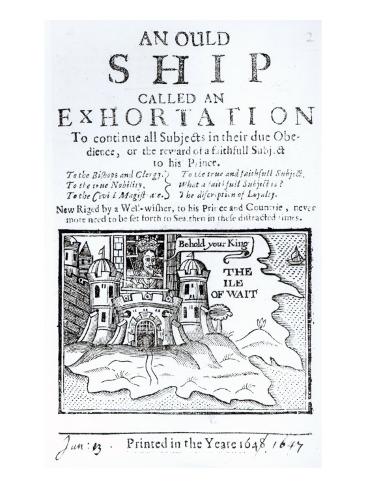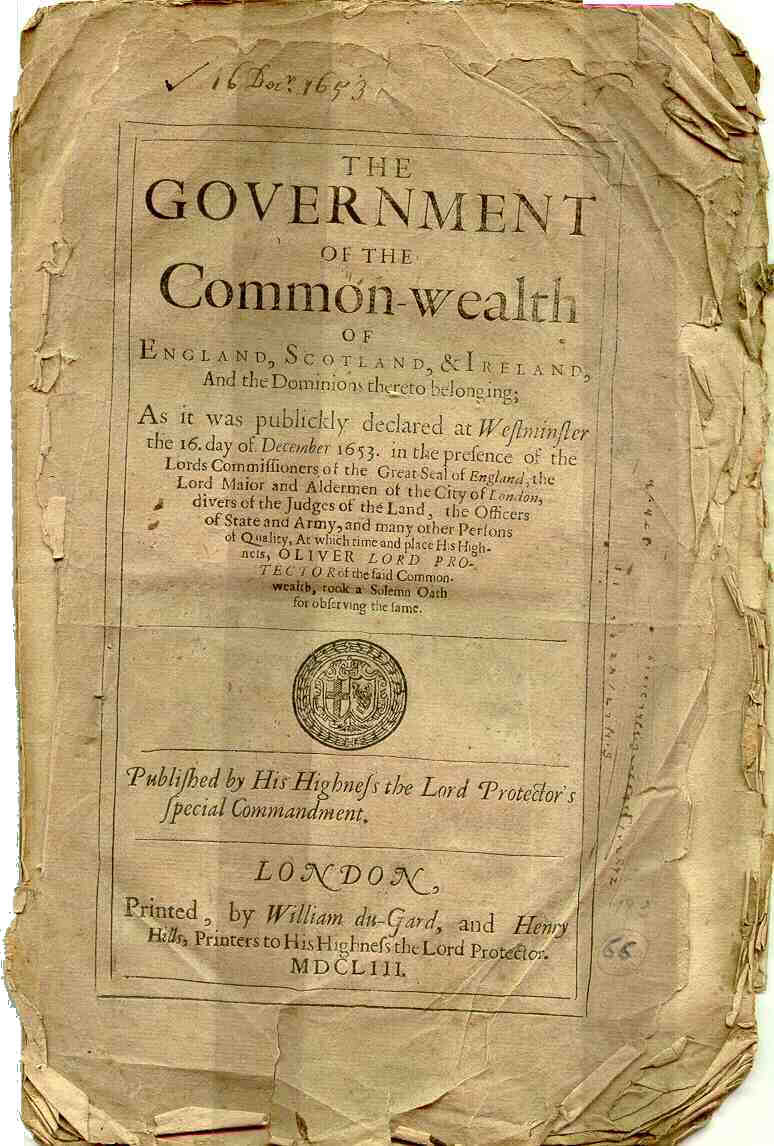English Civil War
1625-1649
Causes:
Charles invades the House of Commons-January 4 ,1642
Charles was not ruling according to the law, so Parliament got very upset and removed many of his powers. Charles then took it upon himself to use his soldiers to break into the House of Commons, and then attempted to arrest the parliamentary leaders. I see this as Charles trying to make a point and symbolize how he felt he had absolute control. By Charles bringing 500 soldiers into the House of Commons it intimidated people and was telling them that Charles is not a man to mess with. This event became the most significant of all the causes of the English Civil War because this was the turning point where Charles directly attacked the body that was attempting to restrict his control. Charles physically going into Parliaments face and confronting them, pulled the trigger on the gun of Civil War.

Components:
Solemn League and Covenant-September 1643
Battle of Naseby-June 15, 1645
Charles Escapes-November 1647
The Solemn League and Covenant was one of the main contributors of the English Civil War. This was a significant because it gave Parliament a larger and more supportive army for going into further battles, which in turn provided Parliament some leeway and a better chance at defeating the Royalists. The Solemn League and Covenant also brought Presbyterianism to England. Bringing yet another new religion into England created tension throughout the nation. The Battle of Naseby was the turning point and climax of the English Civil War. Charles lost a large mass of his army in the Battle of Naseby, so large that he couldn’t regain and reform a new army. This loss gave the other armies an advantage and forced Charles to surrender to the Scots. The loss of so many soldiers disabled Charles and gave him a great disadvantage for his future battles. Charles escaping from the Scots really set the stage for the last main contributor to the English Civil War. During the course of this event not only did Charles anger Parliament once more, but he then escaped and took refuge on the Isle of Wight. But I feel the most important part of his escape is Charles making an agreement with the Scots to bring Presbyterianism to England (in return for military support). The long term affect from this specific action led in part to how accepting our society has grown to become today.



Consequences:
Charles on Trial January 20-23, 1649
For many, Charles being on trial was a great relief. Parliament took this as an opportunity to remove what they believed was a problem (Charles had very little respect for Parliament and the law). This was a first, for a king had never been placed on trial before. The army purging Parliament did have a impact on the result of the trial, although it was not as important as the actual trial itself. The army leaving only Puritan members in the House of Commons made it easier for Parliament to order the execution of Charles I. Without the trial, the execution of Charles would most likely never have happened. During the trial Parliament stood up and took control away from Charles. From this point forward no leader has ever had as much power and control as Charles I once did. As a result of this trial (and Charles’ execution) England became a Republic. In the years to follow England restored its Monarchy, but without the king’s absolute power.

Cromwell and the Republic
1649-1661
Instrument of Government appoints Cromwell Lord Protector December 15, 1653
General Monck recalls Parliament and invites Charles II to be king April 4, 1660
By Cromwell previously dismissing Parliament, then to be appointed Lord Protector, gave him similar power and control as a king. This means that Cromwell could have potentially followed the steps of Charles, and drove England into a 3rd Civil War. This was a very scary power for any leader to have because they can act as a dictator. Cromwell is now dead. His son Richard resigns, and England has no leader. With England being without a leader they are on the verge of anarchy. General Monck arrives in London and tells Parliament to hold an election for a new leader. Parliament then invites Prince Charles to England and the monarchy is restored (turning point). With Cromwell being dead, there were many different directions that the general could have taken the country. With England on the verge of anarchy it was very possible that this situation could result in a civil war. As an end and long term result the Monarchy and Parliament is restored.


Charles II and Restoration of the Monarchy
1661-1685
Parliament passes the Test Act January 1678
The Test Act was Parliament imposing its will over the King. The Test Act excluded Catholics from being members of Parliament or holding any higher office, which later on restricted James II and would have affected Charles II if parliament were aware of his transition to Catholicism at the time. Without the Test Act the Glorious Revolution may have never happened, it was because of King James II’s violation against the Test Act that drove him to abdicate the throne (the turning point). Although the immediate effect was not as crucial as the long term affect I believe that Parliament passing the Test Act was the most significant component.

James II and the Glorious Revolution
1685-1689
James II abdicates the throne – Glorious Revolution December 1688
Mary and William agree to the Bill of Rights December 16,1689
The Glorious Revolution was significant because it was the first time the monarch was selected by Parliament. When James abandoned the throne, Mary and William took the throne, to start the Glorious Revolution. Charles abandoning the throne was the turning point, England’s king had just left and it was Parliament’s pleasure to choose a new king and queen. The Bill of Rights was significant because it showed that Parliament had sovereignty and control of the country. Through the Bill of Rights, Parliament is once again placing restrictions on the Monarchy and taking control. The Bill of Rights enhanced the democratic election and supported the freedom of speech. The long term affect from the Bill of Rights, is that it set a standard for many other countries to emulate and create their own versions. It also was one of the first documents to set rights for the people of England.

